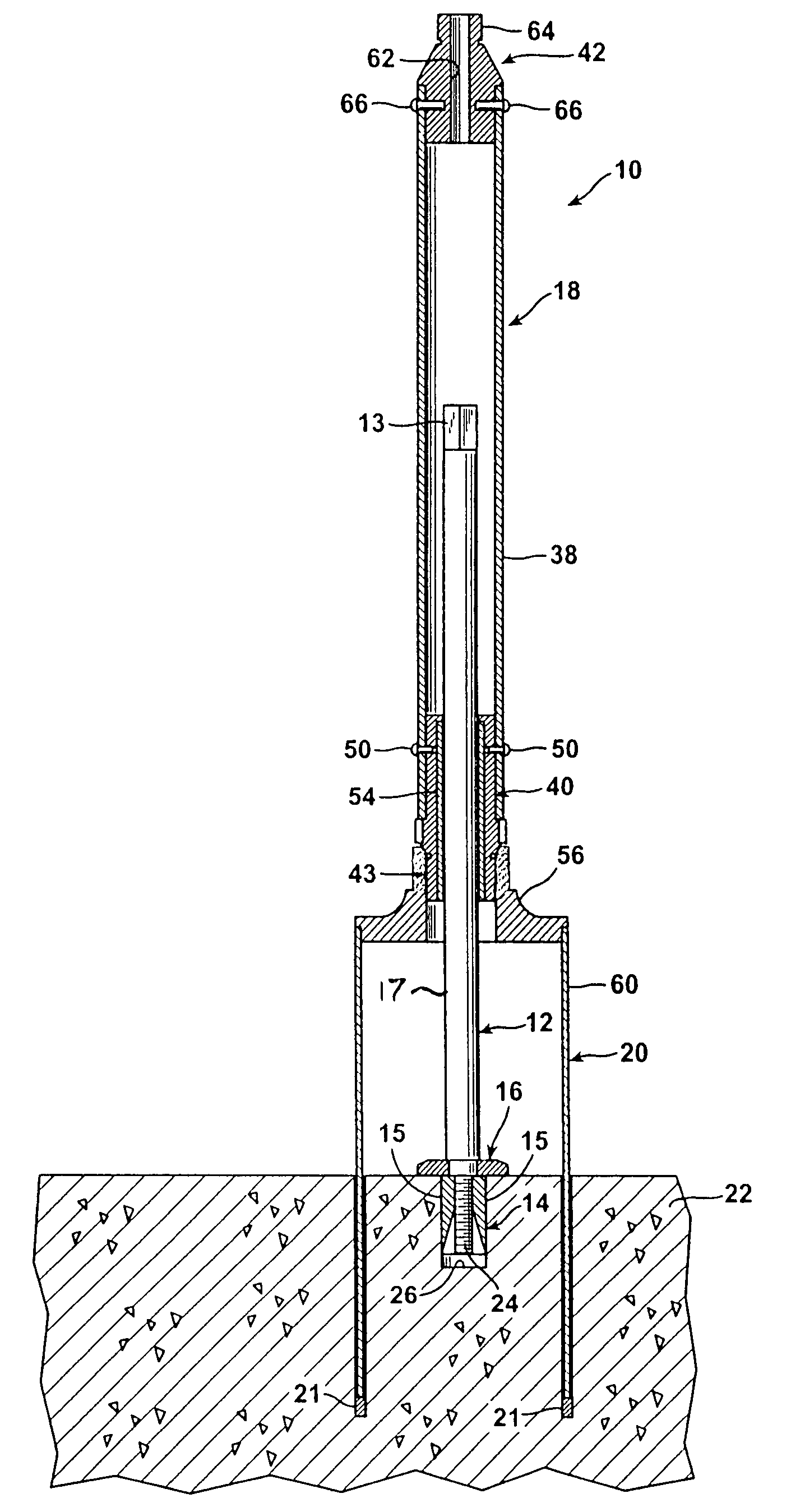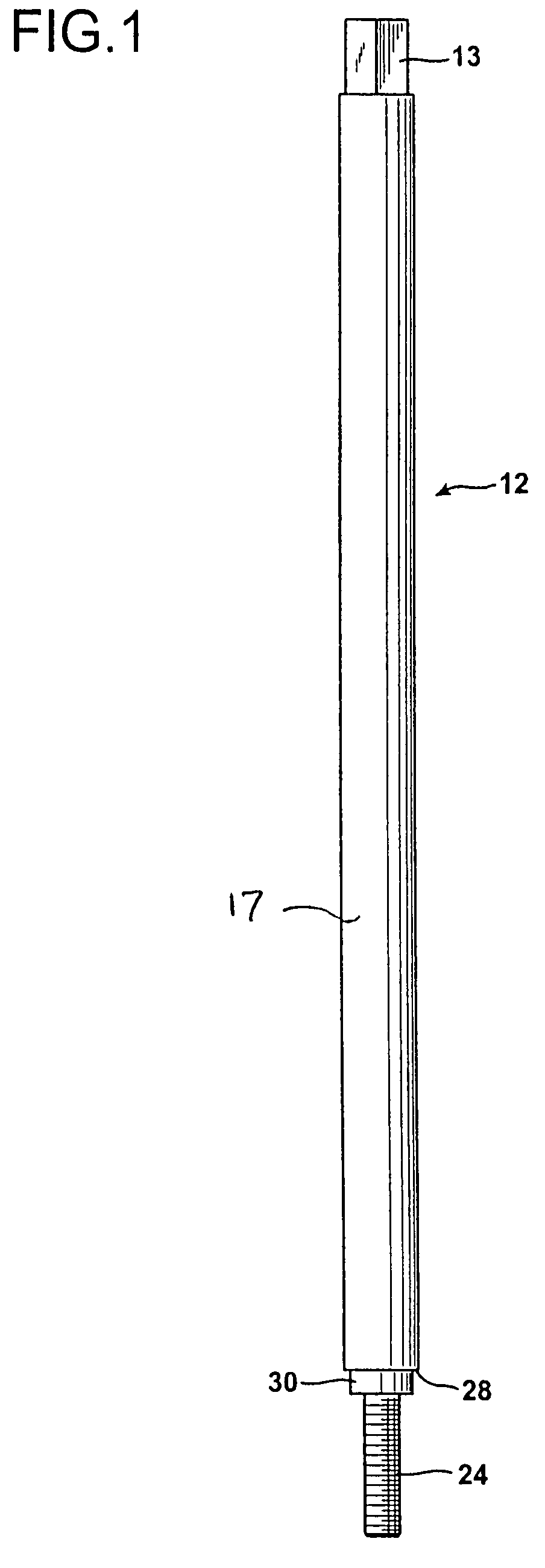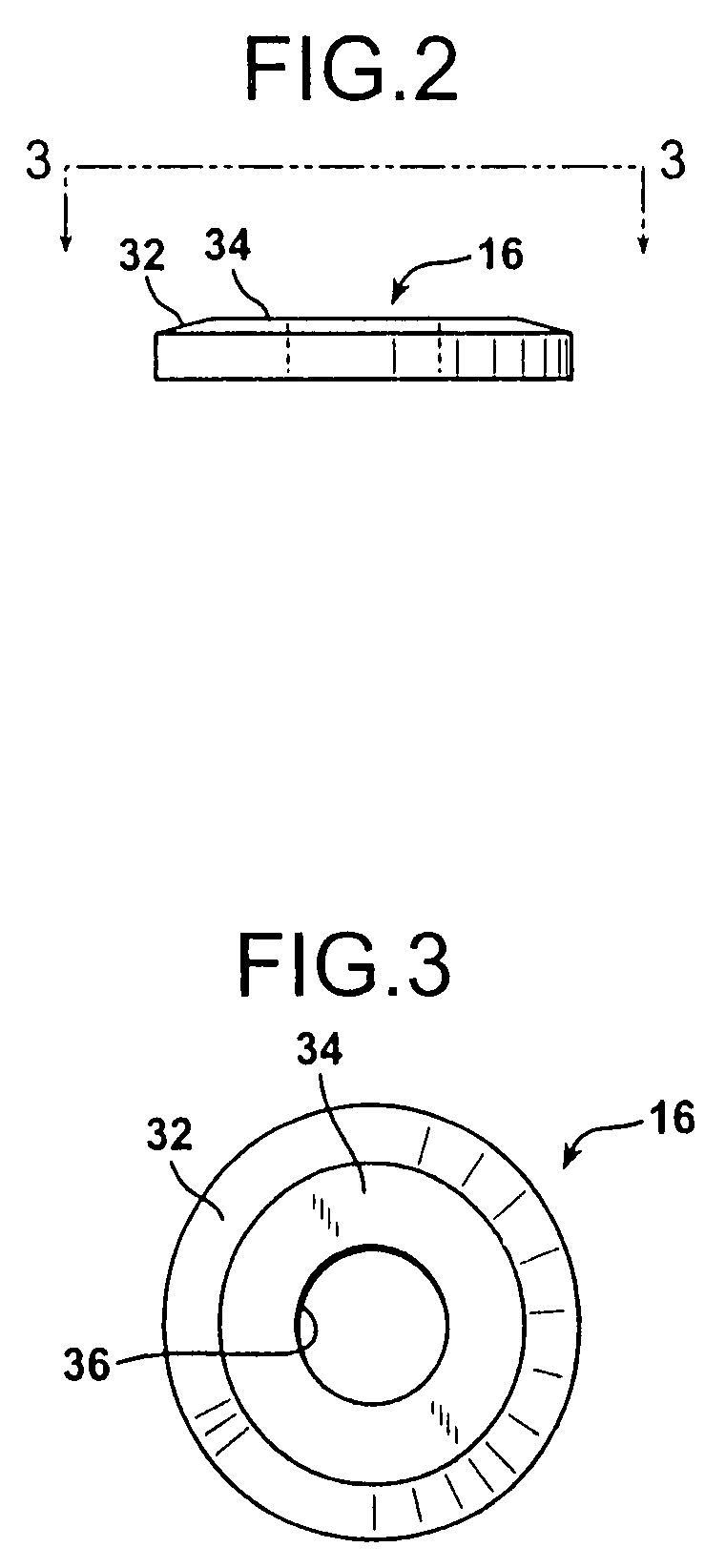Hole coring system
a coring system and hole technology, applied in the direction of drilling rods, drilling pipes, cutting machines, etc., can solve the problems of affecting the accuracy of drilling, so as to achieve the effect of high degree of control
- Summary
- Abstract
- Description
- Claims
- Application Information
AI Technical Summary
Benefits of technology
Problems solved by technology
Method used
Image
Examples
Embodiment Construction
[0046]FIG. 10 illustrates a hole coring system 10 according to the invention. The hole coring system 10 includes a mandrel 12, an anchor mechanism 14 attached to the lower end of the mandrel 12, a shoulder washer 16 for stabilizing the mandrel 12, a drive shaft assembly 18, and a hollow, tubular core drill bit 20. The mandrel 12 is a long, solid steel rod having an upper engagement end 13 of hexagonal cross section and an externally threaded lower anchoring support end 24. The mandrel 12 has a smooth, cylindrical, intermediate, outer surface 17 between its upper end 13 and its lower end 24. The diameter of the lower mandrel end 24 is smaller than the diameter of the cylindrical outer surface 17. The mandrel 12 is shown in isolation in FIG. 1.
[0047]As shown in FIG. 4 the lower, anchoring support end 24 is provided with an expansion anchor mechanism 14. The anchor mechanism 14 is an expansion anchor that provides a rigid connection between the concrete material to be drilled, indicate...
PUM
 Login to View More
Login to View More Abstract
Description
Claims
Application Information
 Login to View More
Login to View More - R&D
- Intellectual Property
- Life Sciences
- Materials
- Tech Scout
- Unparalleled Data Quality
- Higher Quality Content
- 60% Fewer Hallucinations
Browse by: Latest US Patents, China's latest patents, Technical Efficacy Thesaurus, Application Domain, Technology Topic, Popular Technical Reports.
© 2025 PatSnap. All rights reserved.Legal|Privacy policy|Modern Slavery Act Transparency Statement|Sitemap|About US| Contact US: help@patsnap.com



